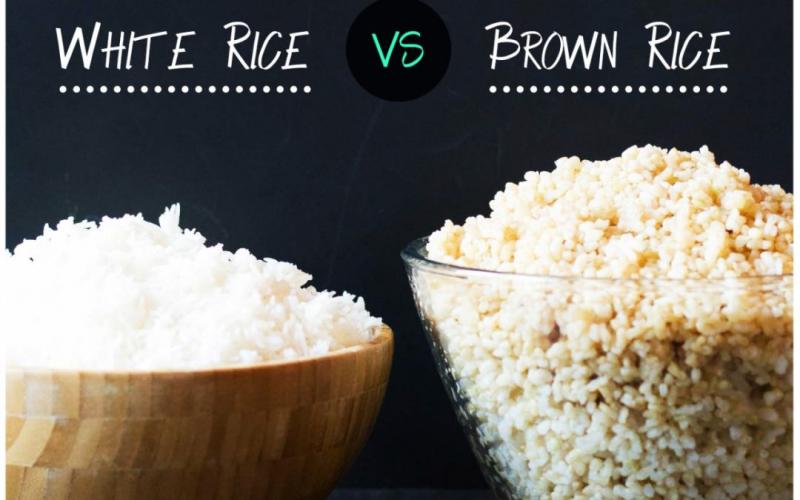
Considered to be the ‘king of cereals’, rice is the main staple food for half of the world’s population, 90% of which reside in Asia. Unlike other grains, rice is milled to remove the outer husks and then polished before consumption. Based on type of pre-treatment (parboiling of rough rice) given to the rough rice before milling and the extent of milling, three principal types of rice (Fig. 1) are sold in the market. Rice grain quality and nutrient composition or status are important in terms of human nutrition.
Let's take a closer look at the three main benefits that are attributed to brown rice. Maybe they are not advantages at all?
also read: Healthy Foods That Are High in Vitamin D
1. Brown rice has less carbohydrate.
One of the main arguments of the adherents of a healthy lifestyle and those who monitor weight. Yes, the carbohydrate content is a crucial characteristic, largely deciding whether to put this or that product in a basket in a supermarket, and then in a plate. But this must be treated rationally. Per 100 g of dry white rice there are 71–79 g of carbohydrates, and in the same amount of brown they are 65–77. There is a difference, but it is so insignificant that it is not capable of breaking the diet if you are not at the last stage of “drying” before bodybuilding competitions. And this rice is hardly the most dangerous product on your menu.
And note that the amount is per 100 grams of dry rice. If you cook it , you get a decent saucepan. Therefore, in terms of a serving or daily allowance, the difference will be even less significant. Feel free to eat white rice, in terms of carbohydrate content, it is definitely no more dangerous than brown.
2. Brown rice has more fiber.
Yes it's true. The color of brown rice is due to the fact that it, unlike white, does not undergo polishing. All the fiber remains in the dark grain, and it is valuable for health. But only if you do not get enough of it from other products. Fiber is good for the health of the gastrointestinal tract, it is great for nourishing, but with excessive consumption can cause a lot of discomfort from the digestive system. Bloating, flatulence - all of these are side effects of fiber overdose.
In addition, polishing makes white rice safer. The fact is that in the course of processing the grain is deprived of not only the “skin” with fiber, but also of the embryo. The value of the latter in a high content of fatty acids. However, under certain conditions, the germ may deteriorate, fatty acids oxidize (sorry for the tautology), and the grain will become potentially dangerous to health. Fats needed by the body are available in an accessible form in many other products . Sense of trying to get them from brown rice, putting the body at extra risk?
3. Brown rice has more nutrients.
As mentioned above, due to the fact that the brown grain is not subjected to grinding, there are more nutrients left in it. It is not only fiber and fatty acids, but also minerals, vitamins and trace elements. But the usefulness of the product is determined not only and not so much by its chemical composition. It is important that the body can learn from this. This is very clearly seen in the example of vegetable protein . In legumes and other "green" foods there can be a lot of protein. But its digestibility is not very high - it is not easy to extract the necessary substances from the cells due to their strong shells.
The same with rice. Due to the fact that the brown grains remain "skin", it is more difficult to digest than white. And a huge part of this beautiful and necessary chemistry remains in the grains and is displayed along with the decay products. There is a potential benefit, but there is almost no practical.
And in the shell of brown rice there is phytic acid. This substance is attributed to a number of so-called antinutrients, that is, anti-nutritional compounds. By itself, it is not dangerous. But it prevents the absorption of other nutrients, such as iron and calcium. So, part of the nutrients that the body could still remove from the grains cannot be used.
also read: Eat 1 banana per day to achieve this amazing Health benefits